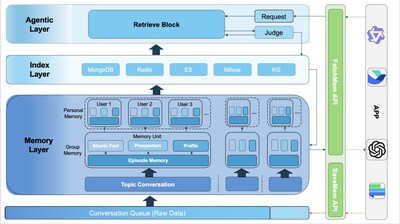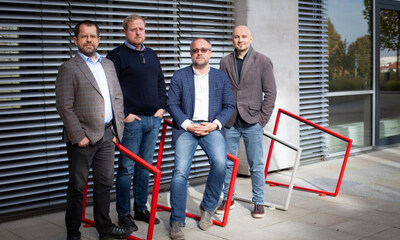Sensors for Robotics: Technologies and Global Markets
Press Releases
Sep 25, 2017
LONDON, Sept. 25, 2017 /PRNewswire/ — • The global market for sensors for robotics should reach $840 million by 2022 from $510 million in 2017 at a compound annual growth rate (CAGR) of 10.5%, from 2017 to 2022.
Download the full report: https://www.reportbuyer.com/product/5113920
• Asia-Pacific market for sensors for robotics is expected to grow from $196 million in 2017 to $316 billion in 2022 at a CAGR of 10.0% for the period 2017-2022.
• European sensors for robotics market is expected to grow from $111 million in 2017 to $201 million in 2022 at a CAGR of 12.6% for the period 2017-2022.
Chapter 1: Introduction
Sensors for robotics is becoming an increasingly important area as robotics becomes more ubiquitous in small- and large-scale applications ranging from domestic appliances to self-driving cars. Robotics on the factory floor, in the supply chain and even on the farm are undergoing significant innovation with the aid of sensors.
Commercial, entertainment and military applications of sensor-assisted robotic drone technology is driving the market as well. Finally, applications of sensors to healthcare robotics use cases represents a growing frontier.
With all the applications, sensors for robotics can be segmented into four main categories:
• Vision (requiring optical and image processing sensors).
• Touch (requiring signal processing for contact detection and interpretation).
• Hearing (audio sensors and signal processing).
• Movement (motion and direction sensors with guidance systems).
While much of the focus on robotic sensing has been on replicating human capabilities, sensors can also provide robots with abilities that are beyond human faculties. These can include night vision, radiation or chemical detection or movement detection beyond the human perception range. These additional applications are also driving market growth.
A subset of the $26 billion robotics and $113 billion sensor markets, the sensors for the robotics market exceed $16 billion with a strong growth rate. This report will define the market through in-depth segmentation and forecast growth through the next five years.
Study Goals and Objectives
The goal of this report is to advance BCC Research’s coverage by combining two rapidly developing market categories—robotics and sensors.
This report provides the trends, sizing and forecast for sensor technologies used in robotic applications. The market opportunity is expressed in terms of potential revenue for the addressable market for the technologies by geographic region, technology type, end user segment and application.
Reasons for Doing This Study
The purpose of the study is to establish the market size and forecast for sensor technologies for robotic applications. This data will enable manufacturers to determine the most effective research and development, product packaging and marketing and sales strategies.
Scope of Report
The report sizes the market by technology, including sensors within the vision, touch, hearing and movement segments. The top seven application areas are sized, forecast and discussed in-depth.
These include agriculture, appliances, automotive, healthcare, industrial, logistics and military. In addition, the overall market and each application area is assessed on a worldwide and regional basis, including North America, Latin America, Europe, Middle East and Africa and Asia-Pacific.
Finally, the report presents an analysis of the competitive dynamics of sensors for the robotics market, including critical success factors such as research and development capability, installed base, branding and ecosystem influence and partnerships. The report provides profiles of the manufacturers of sensors for robotics.
Information Sources
The report utilizes primary research interviews with sensor and robotics manufacturers and practitioners in end user applications to develop company-based market sizing and develop and validate total market and forecast assumptions. In addition, these sources are used along with secondary research to gain insight into technology developments and market adoption patterns.
Methodology
Both primary and secondary research methodologies were used in preparing this report. Initially, a comprehensive and exhaustive search of the literature on sensors for robotic applications was conducted. These sources include relevant journals and related books, trade literature, marketing literature, other product/promotional literature, annual reports, analyst reports and other publications.
Subsequently, telephone interviews and email correspondence were conducted with marketing executives, product sales engineers, international sales managers, application engineers and other personnel of relevant companies. Other sources included academics, related suppliers, technical experts and consulting companies.
Geographic Breakdown
In this report, the geographic regions considered for market analysis include, and only include:
• North America.
• Europe.
• Asia-Pacific.
• Rest of World.
Chapter 2: Summary and Highlights
Robotics are dependent on sensor technology to allow applications where robotic appliances can relate to the world. Such appliances rely on sensors to detect environmental and internal status.
Environmental or external robotic sensors ae classified as exteroceptive, reflecting observations of the robotic appliance’s environment and objects in it. Internal robotic sensors are classified as proprioceptive, in that they provide the appliance with “a sense of self” or internal state.
This is done by measuring values internal to the system such as power availability, component position, etc. Sensors are also either active, in that they transfer energy, or passive in that they receive energy.
While there are a wide variety of sensors applicable to these robotic applications, they can be grouped into four major categories:
• Vision (requiring optical and image processing sensors).
• Touch (tactile sensors, requiring signal processing for contact detection and interpretation).
• Hearing (audio sensors and signal processing).
• Movement (motion and direction sensors with guidance systems).
As the technologies to activate these functions evolve, so do the sensors and the capabilities of robotics. For example, enhanced three-dimensional imaging sensors are being used to improve everything from warehouse stocking to surgical support in operations.
As robotic appliances take on less predictable tasks, moving them away from the assembly line and into other environments, it is crucial that sensors continue to improve their capabilities. On the assembly line, as well, advances in sensory perception have improved safety, accelerating the pace of industrial automation.
Ironically, the total number of robotic appliances is increasing while the cost of sensors is decreasing. This creates a robust market for sensors for robotics albeit at a lower revenue per sensor.
This is largely due to two trends:
1. Increasing use of robotic appliances in more and more applications as they become more flexible and “smarter” through improved engineering, use of materials and advanced sensors and analytic capability. The increasing sophistication of artificial intelligence software to interpret sensor data and create a greater spectrum of autonomous responses is also causing the spread of robotic appliances.
2. Decreasing cost of sensors as components, particularly microprocessors, enable greater density on smaller form factors. This is enabling the implementation of sensors in nearly every endeavor, and robotics is no exception.
These factors contributed to a $435 million market for sensors for robotics in 2016. While there are an estimated 10 million robotic appliances, each with multiple sensors, the economic value of the sensor is quite small in the total composition of the robot. Industrial robots, for example, range from $50,000 to $80,000 per unit and upward of $150,000 with customizations for tasks and environment. While sensors are available for less than $1 and decreasing. Still the sensors noneconomic value to a robotic appliance is enormous.
Globally, BCC Research expects the market to grow from $510 million in 2017 to $840 million in 2022, at a CAGR of 10.5%. This market growth will be led by Europe (12.6% CAGR) and the use of sensors for robotics in the consumer markets will outpace growth rates in other markets.
However, the market will continue to be dominated by commercial applications at more than an 80% share led by industrial applications, followed by the healthcare and automotive segments.
Industrial automation is where robotics first became a significant market and that trend will continue, but applications will proliferate across agriculture, consumer appliances and logistics applications. Military and security applications will also continue to be significant consumers of sensors for robotics.
Download the full report: https://www.reportbuyer.com/product/5113920
About Reportbuyer
Reportbuyer is a leading industry intelligence solution that provides all market research reports from top publishers
https://www.reportbuyer.com
For more information:
Sarah Smith
Research Advisor at Reportbuyer.com
Email: [email protected]
Tel: +44 208 816 85 48
Website: www.reportbuyer.com
View original content:http://www.prnewswire.com/news-releases/sensors-for-robotics-technologies-and-global-markets-300525455.html
SOURCE ReportBuyer



